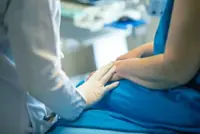Dr Ahn and his team have synthesised a molecule that can kill a variety of cancer cells. — TNS
Researchers from two North Texas universities have created a molecule that kills a spectrum of hard to treat cancers, including an aggressive form of breast cancer. Their work was published in the journal Nature Cancer.
The researchers tested the molecule in isolated cells, human cancer tissue and in mice, with a goal to test in humans by mid-2023. They hope their work could eventually lead to treatments that make a difference in the lives of patients that suffer from these cancers.
Already a subscriber? Log in
Save 30% OFF The Star Digital Access
Cancel anytime. Ad-free. Unlimited access with perks.





